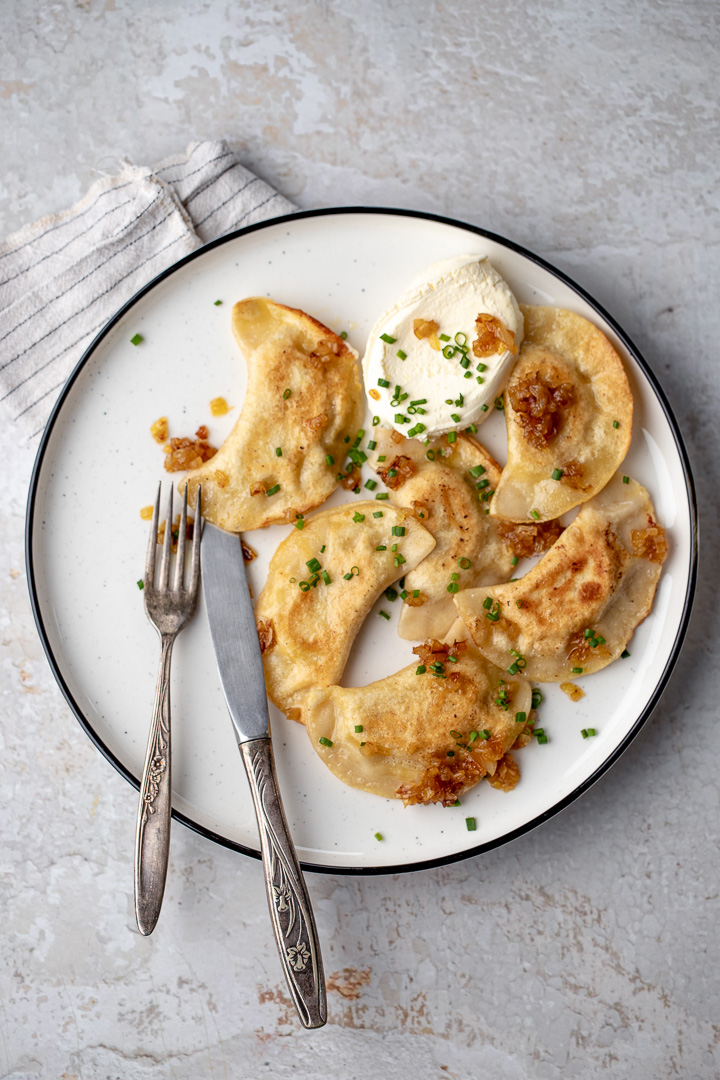
Eastern European dumplings filled with soft potato and cheese, Pierogi Ruskie are savoury, comforting and moreish.
Pierogi, a culinary treasure with deep historical roots, have become a symbol of Eastern European cuisine. Originating in Poland, these stuffed dumplings have undergone a fascinating journey, adapting to diverse cultures and regions.
With origins tracing back to 13th century, pierogi began as simple parcels with simple fillings such as farmer's cheese, potatoes, and cabbage. Over time, their popularity soared, firmly establishing them as a staple in Polish gastronomy.

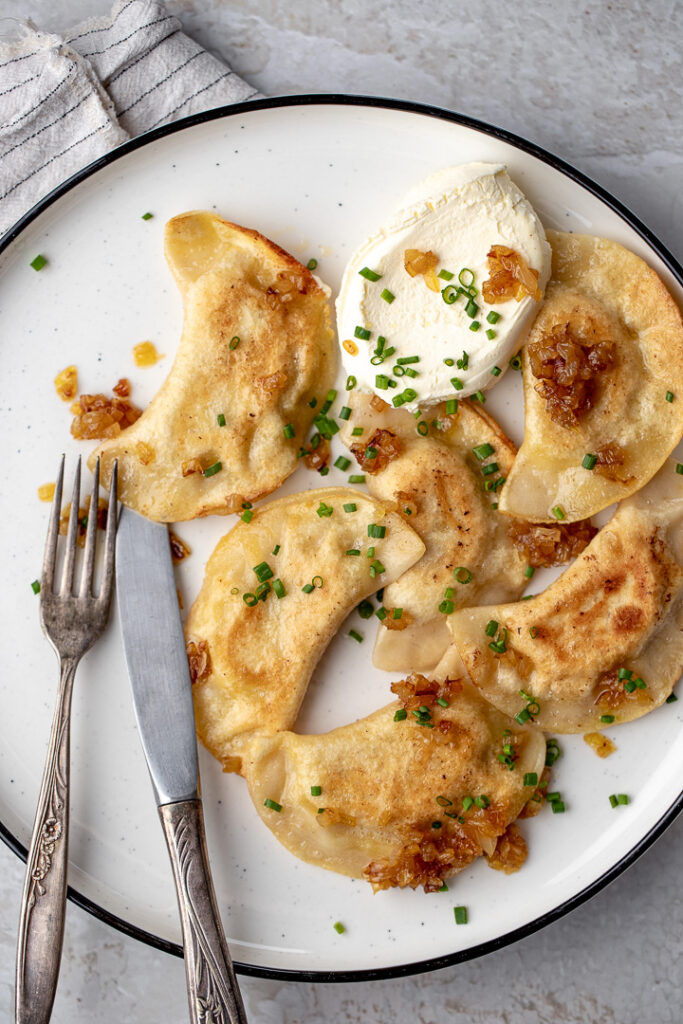
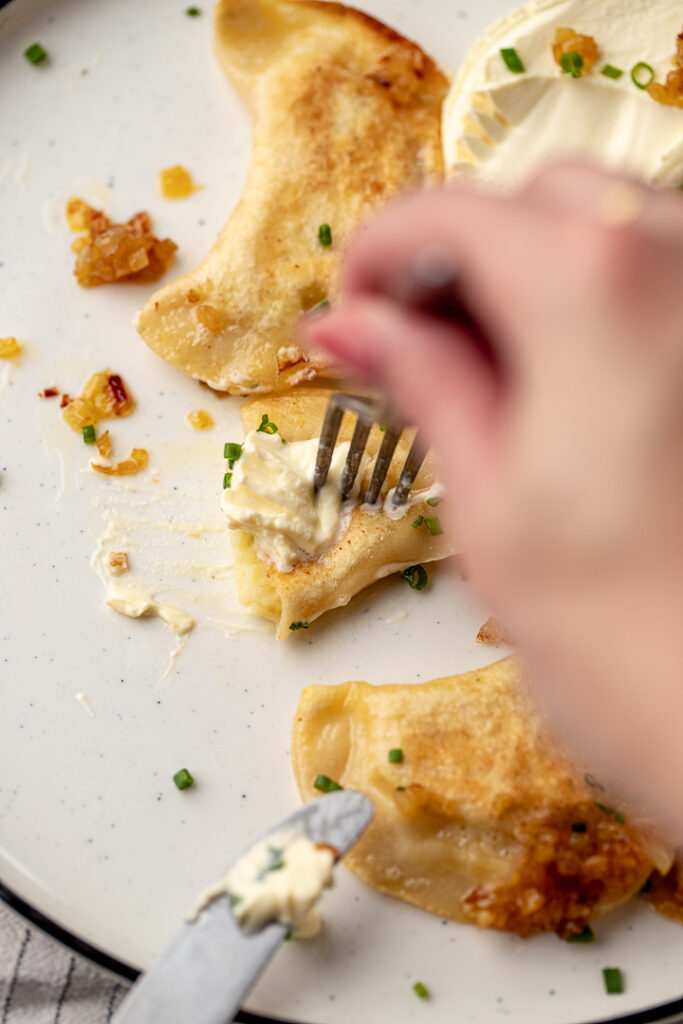
You'll find similar dumplings all across Eastern Europe. In Ukraine, varenyky share the doughy wrappers with fillings like potatoes, cheese, and berries. Lithuania's cepelinai, feature potato coverings encasing minced meat or curd. Hungary's túrógombóc contain sweet cheese dumplings dusted with sugar. These dumplings, similar to pierogi, symbolise the region's culinary diversity and heritage, offering a taste of comfort and tradition in every bite.
The evolution of pierogi led an extended array of fillings that mirror the culinary inventiveness of Poland. You'll now find sweet varieties filled with fruits and cheese, to savoury options with minced meat and mushrooms. Pierogi showcase their versatility in accommodating a spectrum of flavors.
Pierogi's continued popularity is a result of their ability to encapsulate the essence of Polish heritage. These humble dumplings seamlessly bridge the gap between tradition and modern tastes. With every bite, these beloved dumplings tell a story of cultural legacy.
Today I give you pierogi ruskie. These dumplings a filled with a combination of potato and cheese, served with sour cream and sautéed onions.
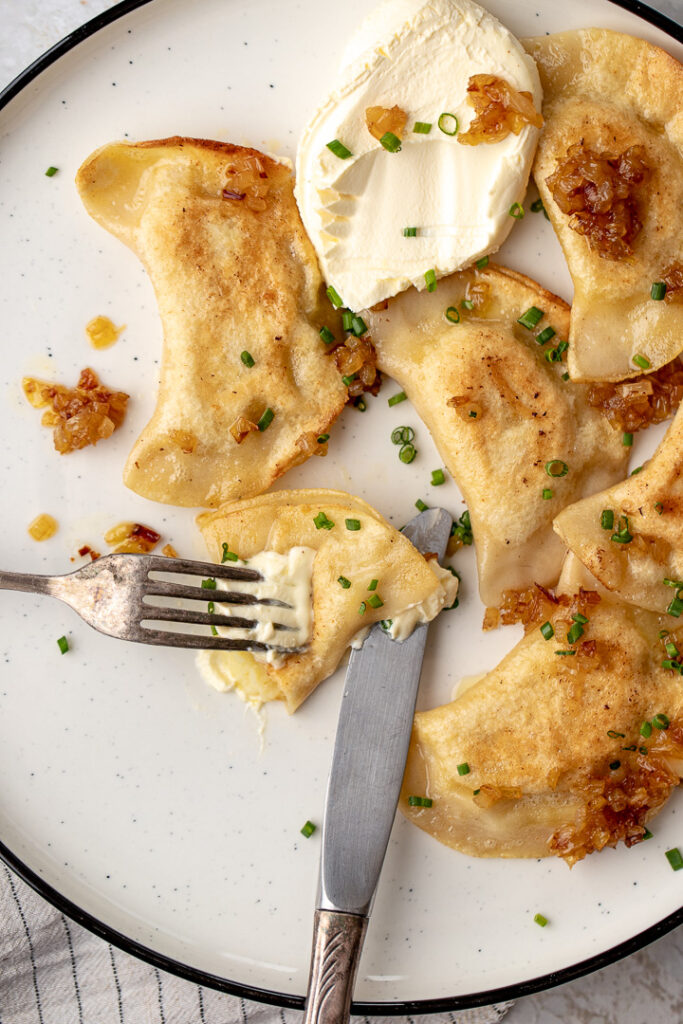
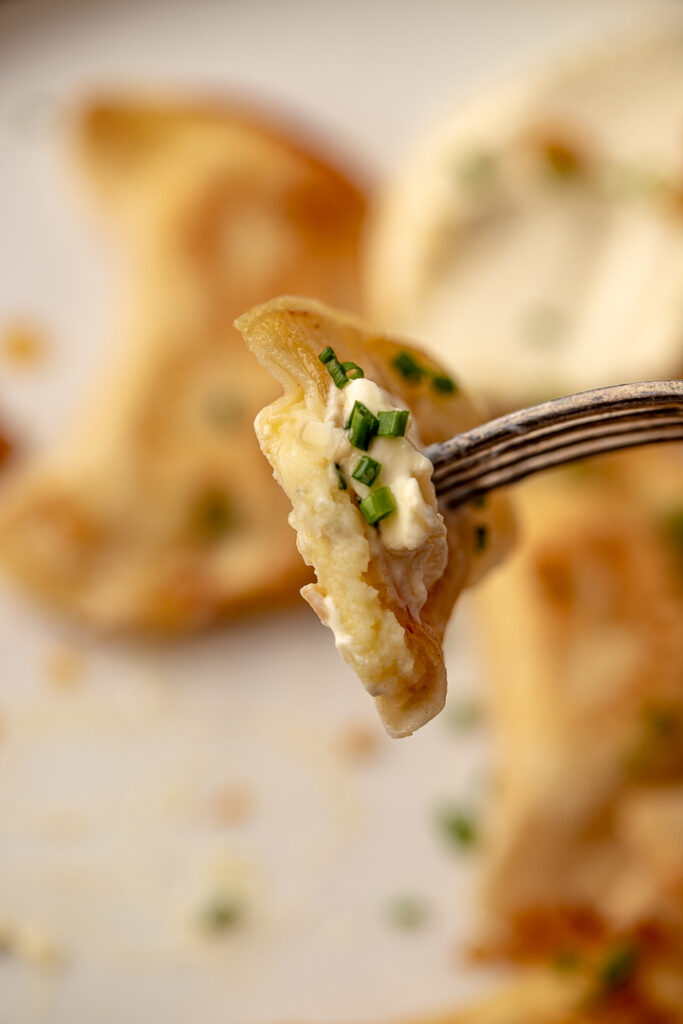
Watch the video here. If you make this recipe, don't forget to tag me on TikTok or Instagram. I love to see it!
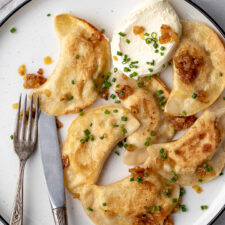
Pierogi Ruskie
Ingredients
- 250 g all purpose flour plus extra for dusting
- 115 mL warm water
- 450 g potatoes peeled
- 4 tablespoon butter
- 1 onion finely chopped
- 100 g cottage cheese
- Salt & pepper to taste
- Sour cream to serve
- Chives finely chopped, to serve
Instructions
- In a large bowl add flour and water. Stir together until dough starts to come together. Turn out on to a floured surface and knead for 8-10 minutes until dough is smooth. Leave to rest, covered, for 30 minutes.
- Meanwhile, chop potatoes into large cubes. Place in a saucepan with water and over a high heat. Boil until tender. Drain well, before pushing all the potatoes through a ricer into a bowl. Set aside to cool while you prepare the onions.
- Melt two tablespoons of butter in a fry pan over medium heat. Add chopped onions and sauté until soft and golden. Add half the onions to the mashed potatoes and reserve the other half for garnishing pierogi at the end.
- Add cottage cheese to the mashed potato as well as salt and pepper. Mix everything together until well combined.
- Dust your surface with flour. Cut dough in two. Working with one half, roll out until approximately three millimetres thick. Using an eight centimetre cookie cutter, cut out as many rounds as you can. Repeat the process with the other half of the dough, squashing together any offcuts to create more pierogi skins. You should end up with 28-30 rounds.
- Your potato filling should be cool by now. Scoop one tablespoon on to a wrapper. Stretch the dough over the top, pressing firmly to seal the edge. To get the rough crimped edges, press the dough between your thumb and forefinger all the way along the edge. Repeat with remaining dough and filling.
- Bring a saucepan of water to the boil. Drop in your pierogi, about 6-8 at a time, allowing them to cook for 2-3 minutes, or until the rise to the surface. You can eat pierogi boiled, or melt the remaining two tablespoons of butter in a fry pan and dropped your cooked and drained pierogi in. Fry on each side for a few minutes until crispy and golden.
- Serve your pierogi with sour cream, drizzled with the remaining sautéed onions, and finely chopped chives.



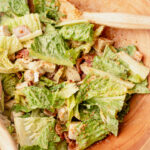


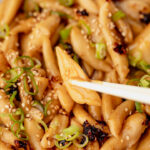

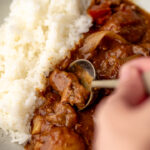
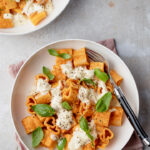





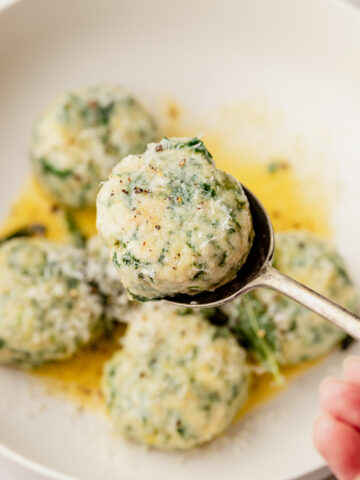


Leave a comment